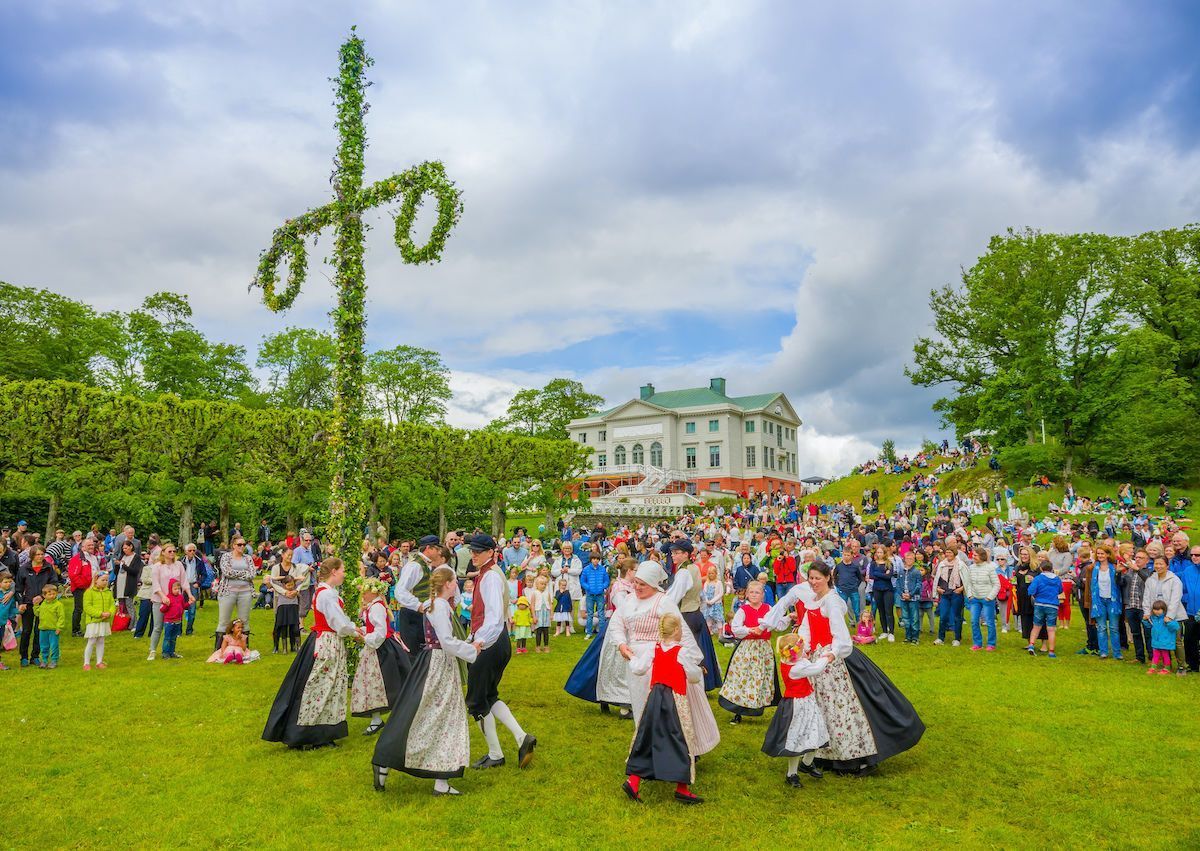
Swedish culture is a rich tapestry woven with history, traditions, and modern influences. Ever wondered what makes Sweden unique? From the iconic fika breaks to the celebration of Midsummer, Sweden offers a blend of old and new that captivates many. Did you know Sweden is one of the most innovative countries in the world? Their knack for design and sustainability is evident everywhere. Why do Swedes love their nature so much? With vast forests, pristine lakes, and the Northern Lights, it's no surprise. Curious about Swedish customs and traditions? Let's dive into 25 fascinating facts that showcase the essence of Swedish culture. Whether you're planning a trip or just curious, these insights will give you a deeper appreciation for this Scandinavian gem.
Key Takeaways:
- Swedish culture is rich with unique traditions, such as Midsummer celebrations and the daily Fika tradition, where Swedes enjoy coffee and pastries.
- Swedish cuisine is known for its simplicity and reliance on fresh, local ingredients, featuring dishes like Surströmming, meatballs, and crayfish parties in August.
Swedish Cuisine
Swedish food is known for its simplicity and reliance on fresh, local ingredients. Here are some interesting facts about Swedish cuisine:
-
Surströmming: This fermented herring is notorious for its strong smell. It's often eaten with flatbread and potatoes.
-
Fika: A daily tradition where Swedes take a break to enjoy coffee and pastries, often cinnamon buns.
-
Meatballs: Swedish meatballs, or "köttbullar," are usually served with lingonberry sauce and mashed potatoes.
-
Crayfish Parties: In August, Swedes celebrate with crayfish parties, where they eat crayfish, drink schnapps, and sing traditional songs.
-
Smörgåsbord: A buffet-style meal featuring a variety of cold and hot dishes, including herring, meatballs, and cheeses.
Swedish Traditions
Swedish culture is rich with unique traditions that reflect its history and values. Let's explore some of these traditions:
-
Midsummer: Celebrated in June, Midsummer involves dancing around a maypole, eating herring, and drinking schnapps.
-
Lucia Day: On December 13th, Swedes celebrate Saint Lucia with processions, singing, and saffron buns.
-
Walpurgis Night: On April 30th, Swedes light bonfires and sing to welcome spring.
-
Name Days: Each day of the year is associated with specific names, and Swedes celebrate their name day much like a birthday.
-
Dala Horse: A traditional carved, painted wooden horse that has become a symbol of Sweden.
Swedish Design
Swedish design is known for its functionality, simplicity, and beauty. Here are some facts about Swedish design:
-
IKEA: Founded in Sweden, IKEA is famous for its affordable, flat-pack furniture and minimalist design.
-
Scandinavian Design: Characterized by clean lines, natural materials, and a focus on functionality.
-
H&M: Another Swedish brand, H&M is known for its trendy, affordable fashion.
-
Alvar Aalto: A renowned Swedish designer known for his modernist furniture and architecture.
-
Kosta Boda: One of the oldest glassworks in Sweden, known for its beautiful glass art and design.
Swedish Language
The Swedish language has its own quirks and interesting aspects. Here are some facts about the Swedish language:
-
Vowel Sounds: Swedish has nine vowel sounds, which can be challenging for non-native speakers.
-
Compound Words: Swedish often combines multiple words into one long compound word.
-
Du-reformen: In the 1960s, Sweden shifted from using formal titles to the more informal "du" (you).
-
Sami Language: In the northern parts of Sweden, the indigenous Sami people speak their own language.
-
Swedish Alphabet: The Swedish alphabet has 29 letters, including three additional vowels: Å, Ä, and Ö.
Swedish Nature
Sweden's natural beauty is a significant part of its culture. Here are some facts about Swedish nature:
-
Allemansrätten: The "Right of Public Access" allows people to roam freely in nature, pick berries, and camp almost anywhere.
-
Northern Lights: In the northern parts of Sweden, you can witness the stunning Northern Lights, or Aurora Borealis.
-
Archipelagos: Sweden has thousands of islands, with the Stockholm Archipelago being one of the most famous.
-
Lapland: Home to the Sami people, Lapland is known for its vast wilderness, reindeer, and midnight sun.
-
National Parks: Sweden has 30 national parks, offering diverse landscapes from mountains to forests to coastlines.
Embracing Swedish Culture
Swedish culture offers a rich tapestry of traditions, values, and quirks. From the love of fika to the celebration of Midsummer, there's always something unique to experience. The emphasis on equality and sustainability reflects the nation's progressive mindset. Lagom, the idea of balance, permeates daily life, influencing everything from work habits to social interactions. Saunas and nature play crucial roles in relaxation and well-being. Even the Swedish language has its own charm, with words that capture emotions and concepts not easily translated. Understanding these facets helps appreciate why Sweden consistently ranks high in happiness and quality of life. Whether you're planning a visit or just curious, these facts provide a glimpse into what makes Sweden special. Dive into these cultural gems, and you'll find a country that's both modern and deeply rooted in its traditions.
Frequently Asked Questions
Was this page helpful?
Our commitment to delivering trustworthy and engaging content is at the heart of what we do. Each fact on our site is contributed by real users like you, bringing a wealth of diverse insights and information. To ensure the highest standards of accuracy and reliability, our dedicated editors meticulously review each submission. This process guarantees that the facts we share are not only fascinating but also credible. Trust in our commitment to quality and authenticity as you explore and learn with us.
